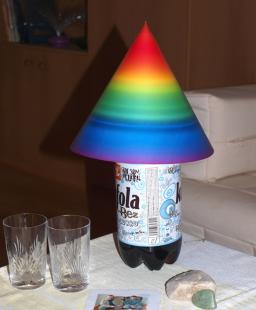Axial cut
The cone surface is 388.84 cm2, and the axial cut is an equilateral triangle. Find the cone volume.
Final Answer:

Tips for related online calculators
Do you want to convert length units?
Tip: Our volume units converter will help you convert volume units.
The Pythagorean theorem is the base for the right triangle calculator.
Calculation of an equilateral triangle.
See also our trigonometric triangle calculator.
Tip: Our volume units converter will help you convert volume units.
The Pythagorean theorem is the base for the right triangle calculator.
Calculation of an equilateral triangle.
See also our trigonometric triangle calculator.
You need to know the following knowledge to solve this word math problem:
algebraarithmeticsolid geometryplanimetricsUnits of physical quantitiesGrade of the word problem
Related math problems and questions:
- Axial section
 The axial section of the cone is an equilateral triangle with an area 208 km². Calculate the volume of the cone.
The axial section of the cone is an equilateral triangle with an area 208 km². Calculate the volume of the cone. - Axial section
 Calculate the volume and surface of a cone whose axial section is an equilateral triangle with side length a = 18cm.
Calculate the volume and surface of a cone whose axial section is an equilateral triangle with side length a = 18cm. - Equilateral cone
 The axial section of the cone is an equilateral triangle with a side of 12 cm. Surface and volume calculation.
The axial section of the cone is an equilateral triangle with a side of 12 cm. Surface and volume calculation. - Angle of cone
 The cone has a base diameter of 1.5 m. The angle at the central apex of the axial section is 86°. Calculate the volume of the cone.
The cone has a base diameter of 1.5 m. The angle at the central apex of the axial section is 86°. Calculate the volume of the cone. - Equilateral cone
 A cup has the shape of an equilateral cone (side “s” is the same size as the diameter of its base - the axial section is an equilateral triangle) It is supposed to hold 0.2 liters of liquid at a level 1 cm below the rim. Calculate its diameter
A cup has the shape of an equilateral cone (side “s” is the same size as the diameter of its base - the axial section is an equilateral triangle) It is supposed to hold 0.2 liters of liquid at a level 1 cm below the rim. Calculate its diameter - Axial cut of a rectangle
 Calculate the volume and surface of the cylinder whose axial cut is a rectangle 15 cm wide with a diagonal of 25 cm long.
Calculate the volume and surface of the cylinder whose axial cut is a rectangle 15 cm wide with a diagonal of 25 cm long. - Cone - from volume surface area
 The volume of the rotating cone is 1,018.87 dm3, and its height is 120 cm. What is the surface area of the cone?
The volume of the rotating cone is 1,018.87 dm3, and its height is 120 cm. What is the surface area of the cone?
